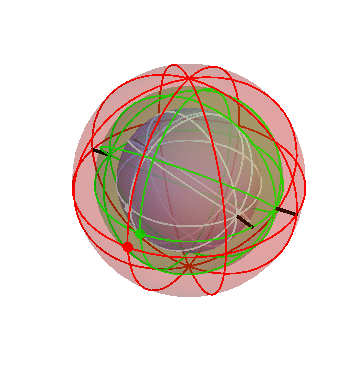I’m teaching about the Copernican revolution in my first-year seminar these days. Before getting to Copernicus, we’re taking a look at what people thought about the motions of the planets at earlier times. We’re particularly focusing on the ancient Greeks, since that’s largely what Copernicus and pals were responding to.
Most astronomy textbooks talk about the Ptolemaic system, with its epicyles, deferents, and the like. But before there was Ptolemy, people like Eudoxus came up with pretty good, detailed models to explain planetary motion based on the idea that all of the heavenly bodies were attached to nested, concentric spheres. This “homocentric sphere” picture was very important, largely because it’s the one Aristotle championed.
To explain the complicated motions of the planets in this model, you need to use multiple spheres, all rotating about different axes at different rates. You’d think there’d be nice animations out there on the Web somewhere to show how this all worked, but I couldn’t find any, so I made my own:
More images and detailed explanations here.

A couple of points to mention. Why was Copernicus more right, even though his model was worse at reproducing the observations? Did Tycho come up with his model since he “couldn’t go all the way and was too attached to past traditions” (seems not likely to me for someone who in that age never married his girlfriend and, as Herbert S. Zim noted, was something like a disoriented cross between W.C. Fields and Carl Sagan) or was it because he didn’t understand wave optics?
The animated earth sphere helps me understand this, but still a little confused, not my best subject!